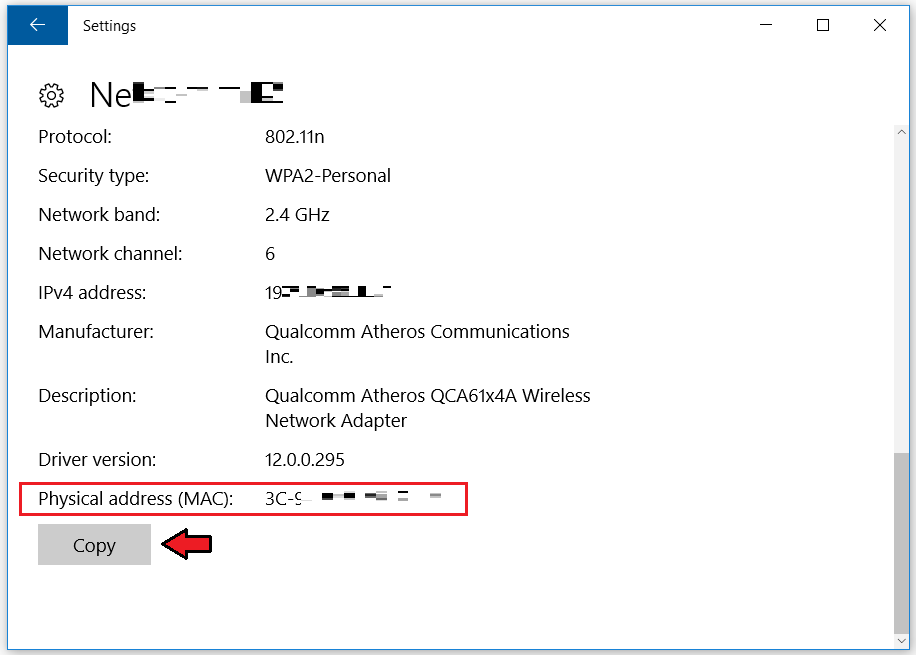
- #Mac address lookup had no results mac os
- #Mac address lookup had no results install
- #Mac address lookup had no results upgrade
- #Mac address lookup had no results free
Generally Nmap’s script engine does lots of things, some of them are below: Network discovery Basically these scripts are written in Lua programming language. It allows users to write (and share) simple scripts to automate a wide variety of networking tasks. The Nmap Scripting Engine (NSE) is one of Nmap’s most powerful and flexible features. Here, I will show everything in the Linux terminal.
#Mac address lookup had no results install
In the below image, I have already installed Nmap.įor Red Hat and Fedora based systems: yum install nmapįor Gentoo Linux based systems: emerge nmap

Linux (Ubuntu and Debian): Fire the command in the Linux terminal: apt-get install nmap

Windows: Install from the official site For Windows, both GUI and command line options are available. Nmap has great support for different environments.
#Mac address lookup had no results mac os
Nmap runs on all major computer operating systems, and official binary packages are available for Linux, Windows, and Mac OS X. It was designed to rapidly scan large networks, but works fine against single hosts. Nmap uses raw IP packets in novel ways to determine what hosts are available on the network, what services (application name and version) those hosts are offering, what operating systems (and OS versions) they are running, what type of packet filters/firewalls are in use, and dozens of other characteristics.
#Mac address lookup had no results upgrade
Many systems and network administrators also find it useful for tasks such as network inventory, managing service upgrade schedules, and monitoring host or service uptime.
#Mac address lookup had no results free
Nmap is a free and open source (license) utility for network discovery and security auditing. I was troubleshooting for a while and those addresses kept appearing until GVC.Nmap (Network Mapper) is an open-source tool that specializes in network exploration and security auditing, originally published by Gordon “Fyodor” Lyon. And as SOON as I exited the Global VPN client she got an IP address. And that's when it hit me, could the Sonicwall Global VPN client be causing these weird MAC address issues? Sure enough her Sonicwall Global VPN Client was running still. I let her know something was weird on the network so she couldn't get an IP address (after clearing BAD_ADDRESS') and she casually mentioned she was on the VPN last night. The culprit turned out to be the Sonicwall Global VPN Client! A user could not get an IP address on the LAN but her WiFi luckily had a super slow connection so she complained. It was not a rogue device on the network. I found the computer that was causing the problem so I was able to troubleshoot why it was doing this today. The good thing - I finally found the cause of this today. Of course this does not explain what is happening but it lets us know it's not random so probably not some bad hardware device.

If you convert the rest of the numbers in the bad MAC address you will see it is simply the bad IP address backwards (in HEX). You will see that is the last number in the actual IP address. E.g., first bad address the first two digits of the MAC address is 27. To give an idea of what that incorrect MAC is simply take the first two digits in a HEX calculator and convert to decimal. So in case anyone is having this weird problem with inaccurate MACs that have that weird ascending order. Note: Please follow the steps in our documentation to enable e-mail notifications if you want to receive the related email notification for this thread. If the Answer is helpful, please click "Accept Answer" and upvote it. It is successfully solved by Wireshark, please refer to: The following is a case similar like your situation. BAD_address are created when an IP conflict is detected, please check the following information:įirstly Common Sense Check: If this has just happened what have you changed? Have you added any Wireless Controllers, or Access Points? Have you deployed any new Switches or Firewalls.ġ.Make sure you have only one DHCP in the network and the DHCP server is not running on a multihomed computer.Ģ.During the troubleshooting process, disable the DHCP fail-over and make the scope available on one Server only to isolate the perception of DHCP Fail-over or multiple DHCP Servers issue.Ĥ.Use some tools such as Wireshark to capture Live Network Data and analyze the process of Ip address distribution.


 0 kommentar(er)
0 kommentar(er)
